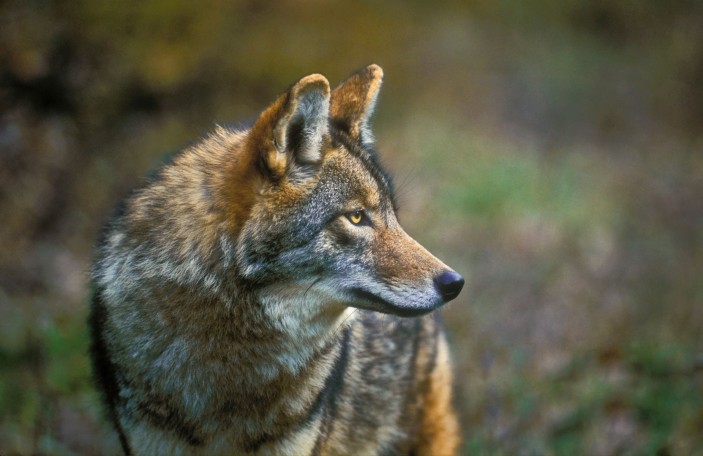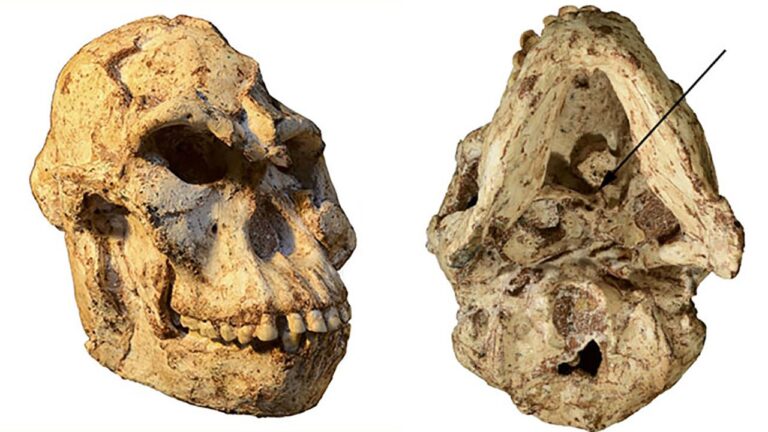Coyote skulls have more primitive characteristics compared to domestic dog skulls. Coyotes are opportunistic animals known for scavenging and hunting in a variety of environments, from deserts to urban areas.
Meanwhile, domestic dogs are bred for specific purposes, resulting in different skull shapes and sizes. Despite their similarities, there are distinct differences between coyote and dog skulls that experts use to differentiate between them. The coyote skull, for instance, has a more primitive form and is structurally less stable than a dog’s skull.
Moreover, coyote skulls have a slightly larger braincase but a narrower muzzle when compared to dog skulls. To learn more about these differences and to understand how to tell them apart, read on!

Credit: www.nature.com
Anatomy Of A Coyote Skull
Coyote skull vs dog skull – anatomy of a coyote skull has several physical characteristics that set it apart from a dog skull. The shape, size, and structure of the two skulls differ significantly. Coyote skulls are typically long and narrow, while dog skulls are more compact and jagged.
Coyotes have larger eye sockets and a more extended snout than most dogs. When comparing the teeth of the two animals, coyotes have longer and sharper canines, which they use to hunt. A coyote’s jaw structure also differs from a dog’s, with a narrower and more pointed protrusion that connects to the skull. Overall, the coyote’s skull is a sight to behold, with several unique features that make it stand out from its canine cousins.
Anatomy Of A Dog Skull
The anatomy of a dog skull is a fascinating subject. Looking at its physical characteristics, we can see its unique shape and size that distinguishes it from other animals. The difference between dog and coyote skulls is notable. While both belong to the same family, the Canidae, their shape, size, and structure differ.
Examining the teeth, jaw, and other features of the dog skull gives us insight into its function and behavior. The dog skull has sharp, pointed teeth to rip and tear meat while its jaw structure allows for a powerful bite.
Overall, studying the anatomy of a dog’s skull not only helps us understand our furry friends better but also teaches us about evolution and adaptation in the animal kingdom.
Key Differences Between Coyote And Dog Skulls
Coyote and dog skulls have some important differences that can impact behavior and diet. For one, coyote skulls tend to be larger and more robust. The shape of the skull also differs between the two animals, with coyote skulls having a more pronounced snout and larger eye sockets.
This suggests that coyotes rely more on their sense of smell than sight. Additionally, coyotes tend to have a wider temporal region in their skull, which may contribute to their strong jaw muscles and ability to consume larger prey. Overall, the differences in size, shape, and structure between coyote and dog skulls reveal key adaptations that have helped these animals survive and thrive in their respective environments.
Similarities Between Coyote And Dog Skulls
Coyote and dog skulls share some essential similarities that reflect their shared ancestry. Their teeth, jaw, and other physical traits are almost identical, indicating similar behavior and diets. Both have distinct canine teeth that allow them to grip and tear prey.
Their molars are sharp and designed for crushing bones, making them proficient scavengers and hunters. Their jaws are powerful and enable them to kill creatures much larger than themselves. Furthermore, both coyotes and dogs have long snouts, which are ideal for tracking their prey in their natural environments.
Overall, these similarities demonstrate the close evolutionary relationship between these two animals, which are both well-suited to surviving in harsh or changing environments.
Frequently Asked Questions Of Coyote Skull Vs Dog Skull
Can You Tell The Difference Between A Coyote And Dog Skull?
Yes, there are distinct differences between a coyote skull and a dog skull. The coyote skull is much smaller than dog skulls plus some other variations in the features of these skulls.
How Can You Tell If It’s A Coyote Or A Dog Skull?
The first thing to look for is the size of the skull. Generally, coyote skulls are smaller than most dog skulls. Additionally, the shape of the skull in terms of the muzzle, eye sockets, and other specific features can often distinguish a coyote from a dog skull.
What Are The Key Features Of A Coyote Skull?
Coyote skulls have long and narrow snouts, eye sockets that are almost on the same level as the top of the skull, and a sharp sagittal crest on the back of the skull that gives the top of the head a “v” shape.
Are Dog Skulls And Coyote Skulls Interchangeable For Study Purposes?
While dog skulls and coyote skulls may have some similarities, they are not interchangeable for study purposes. For example, you might study canine dentition by looking at a dog’s skull, but specifically, studying coyote-specific traits will require a coyote skull.
How Do Coyote And Dog Skulls Differ?
Coyote skulls tend to be smaller than dog skulls, with a long and narrow edge to the nose that extends beyond the teeth. The coyote skull also has a distinctive sagittal crest, which is not typically found in domestic dogs. These differences make coyote and dog skulls easily distinguishable.
Conclusion
All in all, distinguishing between a coyote skull and a dog skull may seem like a challenging task, but it all comes down to a few key differences. The most notable variance between the two is the size, with coyote skulls being larger than the average domestic dog skull.
The shape of the skull and teeth structure are also key factors in differentiating between the two. Coyote skulls have longer snouts and slightly sharper teeth compared to dogs. At times, differentiating between a coyote and a dog skull can be a valuable skill, especially in wildlife research and studies.
Thus, having a clear understanding of the differences between the two is crucial. In the end, knowing how to tell the difference can help scientists and researchers better understand the animal kingdom and its inhabitants, especially those that are often misunderstood and overlooked.



